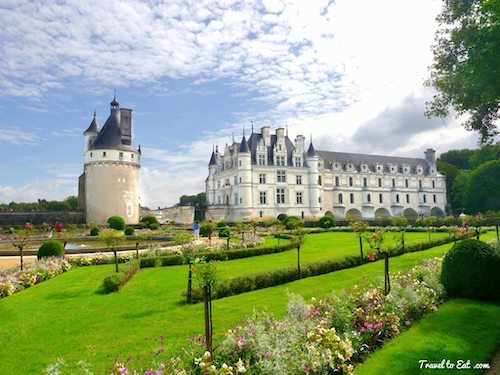
We decided to rent a car and drive to the Loire valley to see some of the châteaux. The Châteaux of the Loire Valley are part of the architectural heritage of the historic towns of Amboise, Angers, Blois, Chinon, Nantes, Orléans, Saumur, and Tours along the Loire River in France. They illustrate the ideals of the Renaissance and the Age of the Enlightenment on French thought and design in the Loire Valley. The “Château des Dames” or Chenonceau was built in 1513 by Katherine Briçonnet, and successively embellished by Diane de Poitiers then Catherine de Medici. Chenonceau was protected from the hardship of the revolution by Madame Dupin. The iron, but very feminine, fist in the velvet glove has always preserved Chenonceau during times of conflict and war in order to make it a place of peace. The château was built on the site of an old mill on the River Cher, sometime before its first mention in writing in the 11th century. The current château was designed by the French Renaissance architect Philibert de l'Orme. An architectural mixture of late Gothic and early Renaissance, Château de Chenonceau and its gardens are open to the public. Other than the Royal Palace of Versailles, Chenonceau is the most visited château in France with over a million visitors per year.
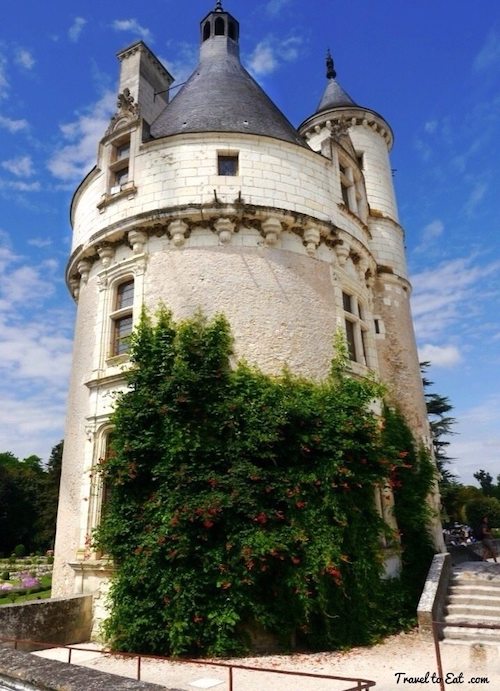
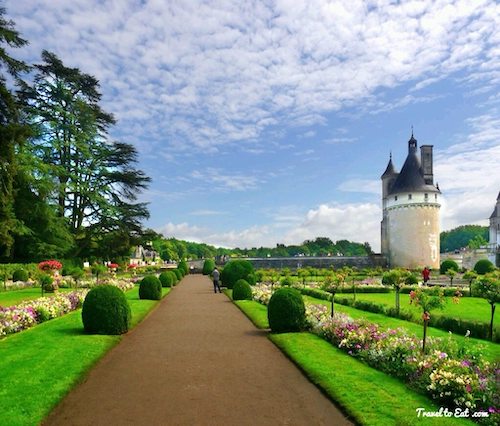
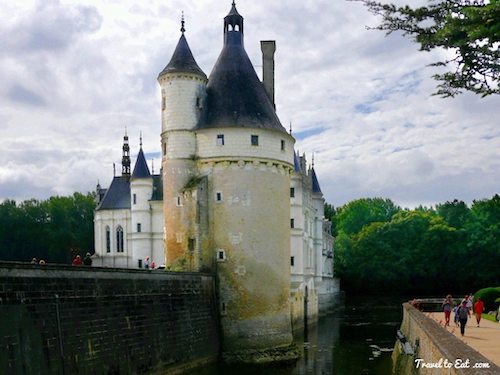
The original château was torched in 1412 by King Charles VII (of Joan of Arc fame) to punish owner Jean Marques for supporting the Duke of Bourgogne and the English. The son was pardoned in 1432 and rebuilt a château and fortified mill on the site. Subsequently, his indebted heir Pierre Marques sold the castle to Thomas Bohier in 1513, Chamberlain for King Charles VIII of France and Treasurer of Milan for King Francis I. Thomas earned a fortune and acquired a taste for Renaissance art, while encouraging the ambitions of his wife Katherine Briconnet with artistic and financial support. Bohier destroyed the castle, though its 15th-century keep was left standing, and built an entirely new residence between 1515 and 1521. The work was sometimes overseen by his wife Katherine Briçonnet, who delighted in hosting French nobility, including King Francis I on two occasions. On learning of Thomas' abuse of power as viceroy of Naples, Francois I decided, in 1535, to reclaim his due, and demanded that the Bohier heirs repay their debts to the crown.

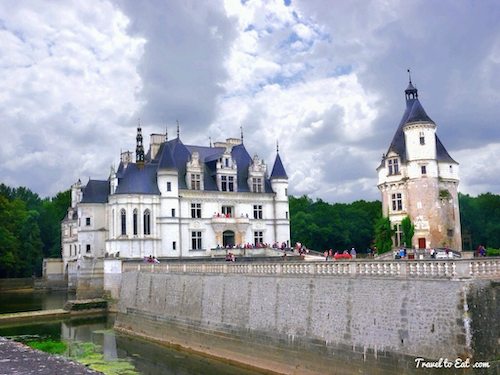
Antoine Bohier, Thomas' son, was in desperate straits. Francois I was demanding that he repay his father's debts, a sum of 190,000 livres tournois, to fill the state coffers drained by the Italian wars. He had to concede the Chenonceau and Houdes properties to the king. But he was finally ruined when Diane de Poitiers stopped this transaction, as she wanted to be the sole owner of this prized chateau, and have it separated from the royal domain. She therefore had to purchase Chenonceau legally, which she managed to do in June 1547. In 1555 she commissioned Philibert de l'Orme to build the arched bridge joining the château to its opposite bank. Diane then oversaw the planting of extensive flower and vegetable gardens along with a variety of fruit trees. Set along the banks of the river, but buttressed from flooding by stone terraces, the exquisite gardens were laid out in four triangles.
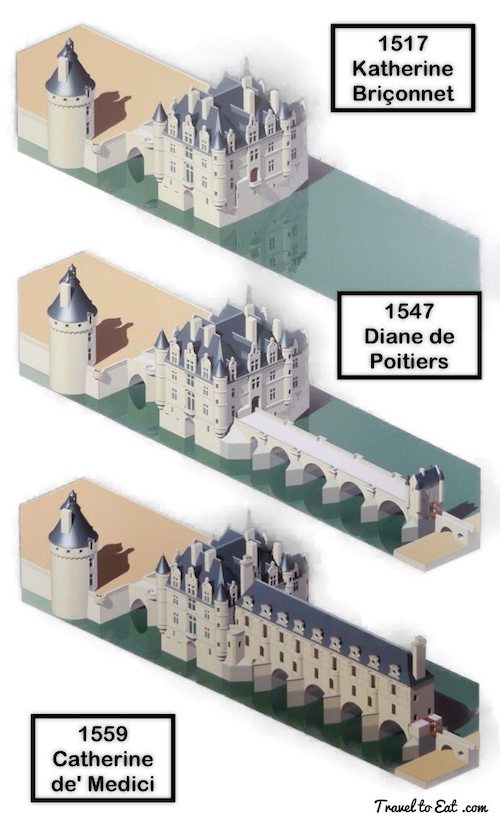
Diane de Poitiers was the unquestioned mistress of the castle, but ownership remained with the crown until 1555, when years of delicate legal maneuvers finally yielded possession to her. However, after King Henry II died in 1559, his strong-willed widow and regent Catherine de' Medici forced Diane to exchange it for the Château Chaumont. Queen Catherine then made Chenonceau her own favorite residence, adding a new series of gardens.
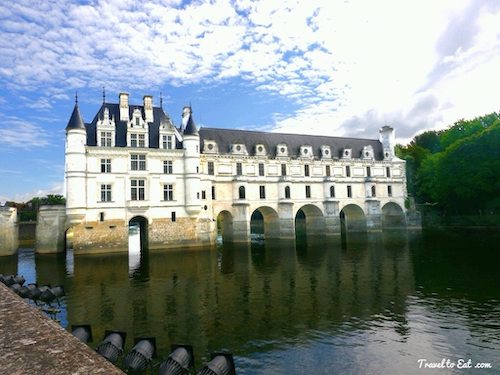
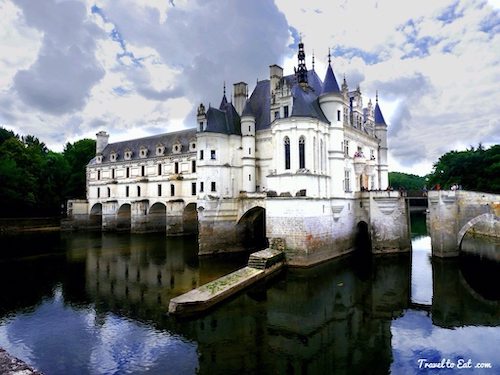
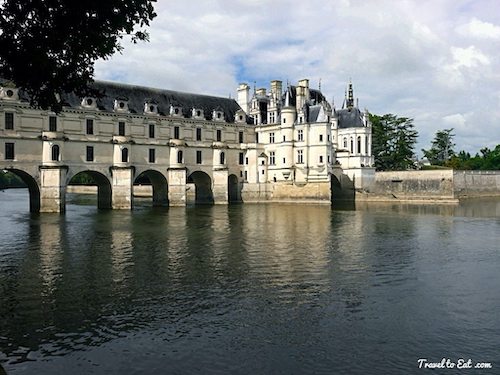
As Regent of France, Catherine would spend a fortune on the château and on spectacular nighttime parties. In 1560, the first ever fireworks display seen in France took place during the celebrations marking the ascension to the throne of Catherine's son Francis II. The grand gallery, which extended along the existing bridge to cross the entire river, was dedicated in 1577.
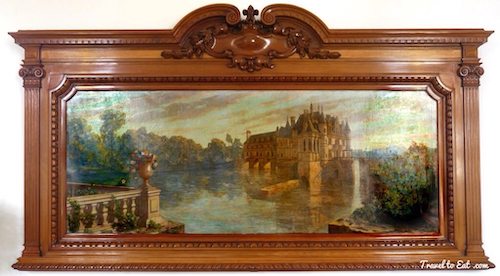
On Catherine's death in 1589 the château went to her daughter-in-law, Louise de Lorraine-Vaudémont, wife of King Henry III. At Chenonceau Louise was told of her husband's assassination in 1589 and she fell into a state of depression, spending the remainder of her days wandering aimlessly along the château's corridors dressed in mourning clothes amidst somber black tapestries stitched with skulls and crossbones. After that, it was owned by Louise's heir César of Vendôme and his wife, Françoise of Lorraine, Duchess of Vendôme, and passed quietly down the Valois line of inheritance, alternately inhabited and abandoned for more than a hundred years. Château de Chenonceau was bought by the Duke of Bourbon in 1720. Little by little, he sold off all of the castle's contents. Many of the fine statues ended up at Versailles. The estate itself was finally sold for 130,000 livres in 1733 to a wealthy squire named Claude Dupin.
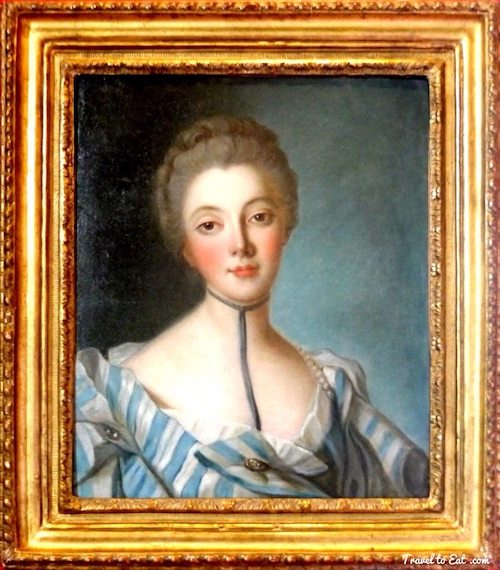
Claude's wife (daughter of financier Samuel Bernard and grandmother of George Sand), Madame Louise Dupin, brought life back to the castle by entertaining the leaders of The Enlightenment: Voltaire, Montesquieu, Buffon, Bernard le Bovier de Fontenelle, Pierre de Marivaux, and Jean-Jacques Rousseau. She saved the château from destruction during the French Revolution, preserving it from being destroyed by the Revolutionary Guard because it was essential to travel and commerce, being the only bridge across the river for many miles. She is said to be the one who changed the spelling of the Château (from Chenonceaux to Chenonceau) to please the villagers during the French Revolution. She dropped the “x” at the end of the Château's name to differentiate what was a symbol of royalty from the Republic. Although no official sources have been found to support this legend, the Château has been since referred to and accepted as Chenonceau. The portrait above was painted by Jean-Marc Nattier (1685-1766), a court painter noted for his portraits of the ladies of King Louis XV's court in classical mythological attire. Many of his pictures are in the public collections of France. Thus at the Louvre is his “Magdalen”; at Nantes the portrait of “La Camargo” and “A Lady of the Court of Louis XV”. The Getty Museum has “Madame Bonier de la Mosson as Diana”, 1742. The Metropolitan Museum of Art has “Madame de Maison-Rouge as Diana”, 1756.
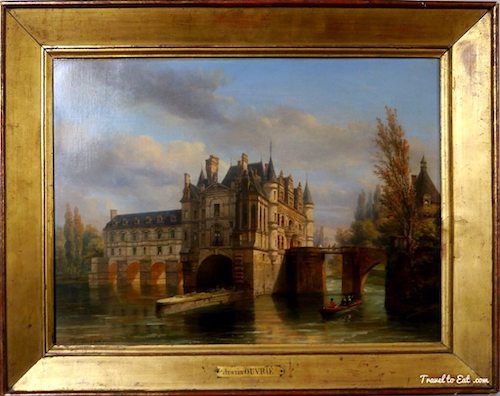
The château was sold in 1864 to Daniel Wilson, in 1891 to José-Emilio Terry, in 1896 to Francisco Terry and finally in 1913 to the Menier family, famous for their chocolates, who still own it today. During World War I the gallery was used as a hospital ward; during the Second War it was a means of escaping from the Nazi occupied zone on one side of the River Cher to the “free” zone on the opposite bank. The château was renovated in 1951, by Bernard Voisin, back to a reflection of its former glory. The painting shown above and exhibited at the château is by Pierre-Justin Ouvrié (1806-1879), a very well known painter of architectural sites, mansions, monuments, and landscapes in France and abroad. Ouvrié’s works are located throughout France in museums such as the Louvre, the Musée des Beaux-Arts in Troyes, and the Musée National du Château in Fontainebleau, among other provincial museums.
I am going to stop here; I have several other posts on Chenonceau in the works. As always, I hope you enjoyed this post and visit this château if you get the chance.
References:
Official Website: http://www.chenonceau.com/index.php/en
History of Chenonceau: http://en.academic.ru/dic.nsf/enwiki/49768
Justin Ouvrié: http://www.rehs.com/Pierre-Justin_Ouvrie_Bio.html
Jean-Mark Nattier: http://www.getty.edu/art/gettyguide/artMakerDetails?maker=459

